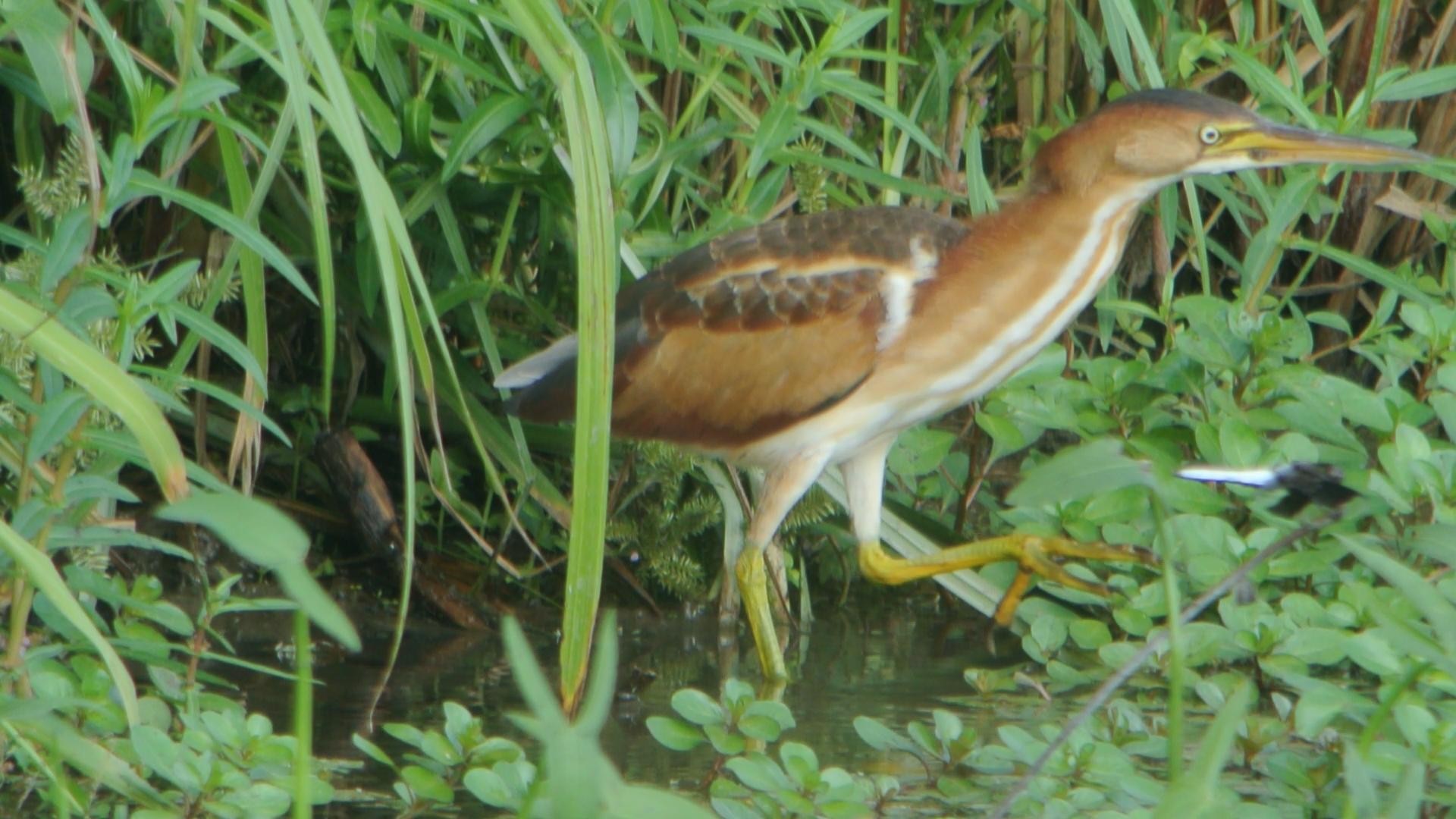Least Bittern
A species of Small bitterns Scientific name : Ixobrychus exilis Genus : Small bitterns
Least Bittern, A species of Small bitterns
Botanical name: Ixobrychus exilis
Genus: Small bitterns
Content
Description People often ask General Info
 Photo By Andy Reago & Chrissy McClarren , used under CC-BY-2.0 /Cropped and compressed from original
Photo By Andy Reago & Chrissy McClarren , used under CC-BY-2.0 /Cropped and compressed from original Description
The least bittern is one of the smallest herons in the world, with perhaps only the dwarf bittern and the black-backed bittern averaging smaller in length. It can measure from 28 to 36 cm (11 to 14 in) in length, and the wingspan ranges from 41 to 46 cm (16 to 18 in). Body mass is from 51 to 102 g (1.8 to 3.6 oz), with most least bitterns weighing between 73 and 95 g (2.6 and 3.4 oz), making this perhaps the lightest of all herons. A recent manual of avian body masses cites another species in this genus, the stripe-backed bittern, as having a mean body mass slightly lower than the least bittern, which is credited with a mean mass of 86.3 g (3.04 oz). The bird's underparts and throat are white with light brown streaks. Its face and the sides of the neck are light brown; it has yellow eyes and a yellow bill. The adult male is glossy greenish-black on the back and crown; the adult female is glossy brown on these parts. They show light brown parts on the wings in flight. 
Size
28-36 cm (11-14 in)
Colors
Brown
Black
Bronze
White
Life Expectancy
10 years
Nest Placement
Ground
Clutch Size
2 - 6 eggs
Incubation Period
1 - 2 broods
Number of Broods
17 - 20 days
Nestling Period
6 - 15 days
Feeding Habits
Least Bittern consumes small fish like minnows and perches, and occasionally small vertebrates and insects. While hunting, these birds use stillness or wing flicks to startle prey and may sway their neck pre-strike. They shake or manipulate larger food items before ingestion.
Habitat
Least Bittern predominantly reside in wetland ecosystems, such as marshes and ponds replete with dense vegetation like cattails and reeds. They seek habitats that offer a mix of vegetation and open water, extending into man-made wetlands with adequate reedbeds. Geographically, least Bittern inhabit freshwater and brackish marshes in summer and diverse wetlands from southern U.S. to Central America in winter.
Nest Behavior
Male least Bittern builds and may repair nest as female incubates; nests can be solitary or quasi-colonial depending on food availability, utilizing a previous nest occasionally.
Nest Characteristics
Least Bittern's nests are about 6-30 inches above water, within dense reeds, constructed by male using stalks in a spokelike pattern, creating a 6-8 inch wide and 2-5 inch deep platform with a canopy.
Dite type
Piscivorous
People often ask
General Info
Feeding Habits
Bird food type
Bird Feeder Type

Ground
Behavior
Least Bittern exhibit solitary hunting habits, typically seen perched silently at marshy reed beds' fringes. Their movement involves slow, calculated steps or climbs, often utilizing their feet to grip reeds for support. Capable of rapid running and body compression, they navigate densely vegetated areas with ease. Their delicate flight involves quick ascension above reeds, followed by a swift disappearance into cover. During longer flights, the least Bittern's heron-like silhouette becomes prominent, marked by speed and directness. When foraging, least Bittern exhibit impressive reflexes, spearing prey effortlessly. At rest, preening and limb stretching are common - their disproportionately long necks occasionally unfurling. Threat responses include hissing and wing-tilting. Uniquely, least Bittern employ camouflage by mimicking reeds, a defensive posture adopted even by nestlings. Likely monogamous per season, courtship involves the male grooming the female prior to mating.
Species Status
Not globally threatened.

 Photo By Andy Reago & Chrissy McClarren , used under CC-BY-2.0 /Cropped and compressed from original
Photo By Andy Reago & Chrissy McClarren , used under CC-BY-2.0 /Cropped and compressed from original Scientific Classification
Phylum
Chordates Class
Birds Order
Pelicans and Relatives Family
Herons Genus
Small bitterns Species
Least Bittern